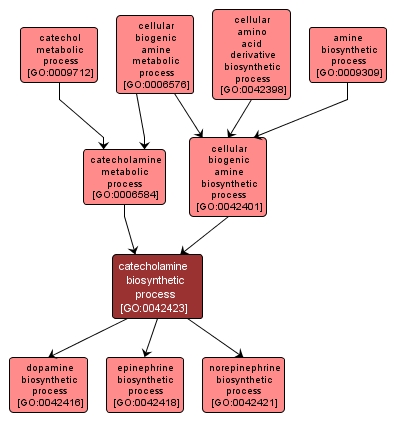GO TERM SUMMARY
|
| Name: |
catecholamine biosynthetic process |
| Acc: |
GO:0042423 |
| Aspect: |
Biological Process |
| Desc: |
The chemical reactions and pathways resulting in the formation of any of a group of physiologically important biogenic amines that possess a catechol (3,4-dihydroxyphenyl) nucleus and are derivatives of 3,4-dihydroxyphenylethylamine. |
Synonyms:
- catecholamine biosynthesis
- catecholamine anabolism
- catecholamine formation
- catecholamine synthesis
|
|

|
INTERACTIVE GO GRAPH
|














